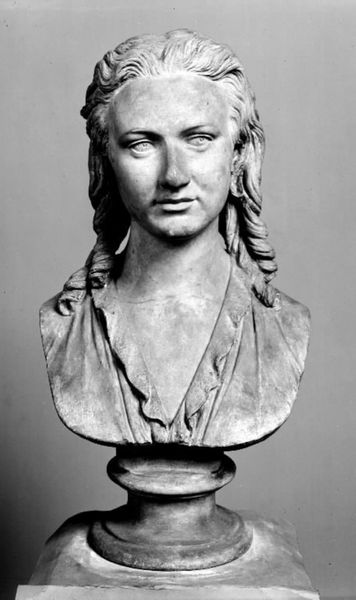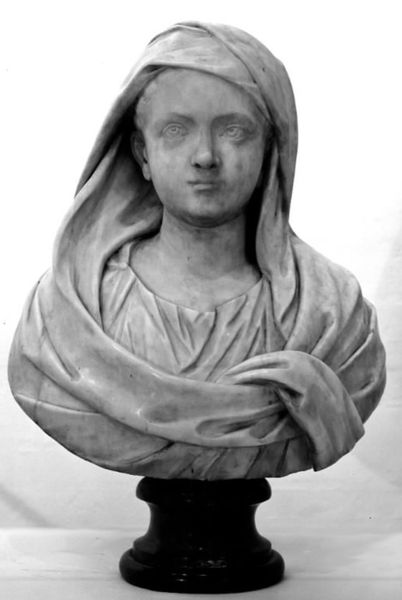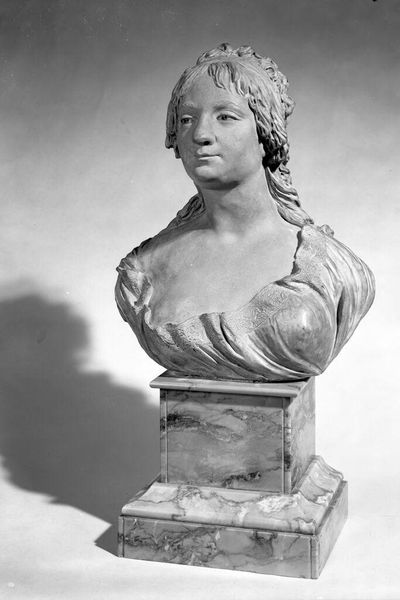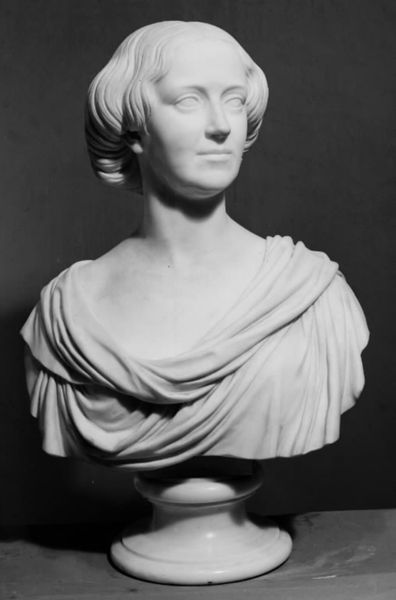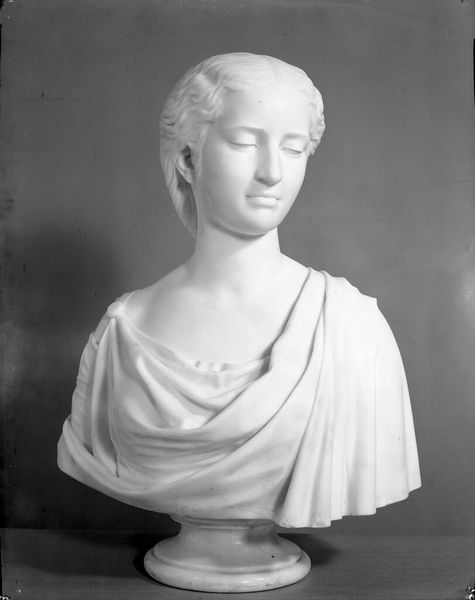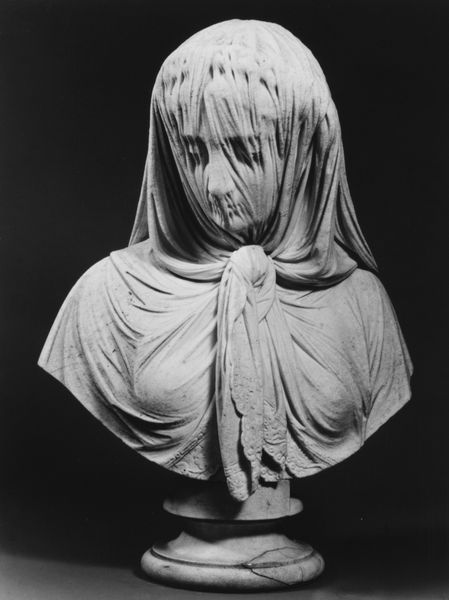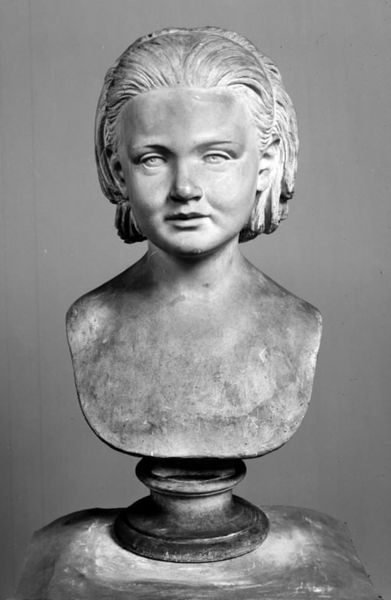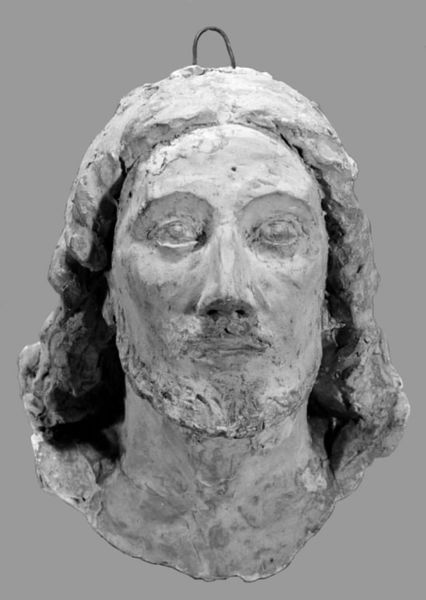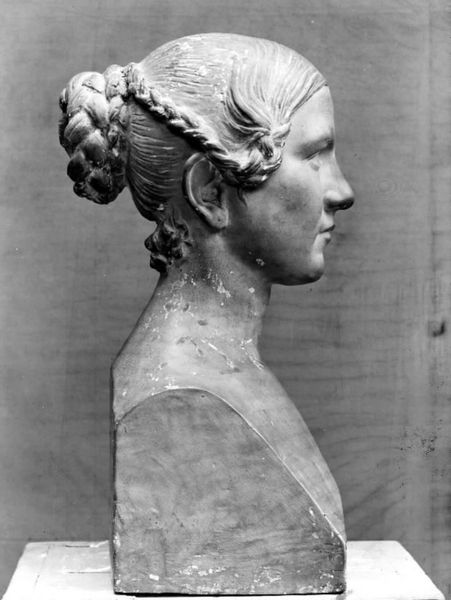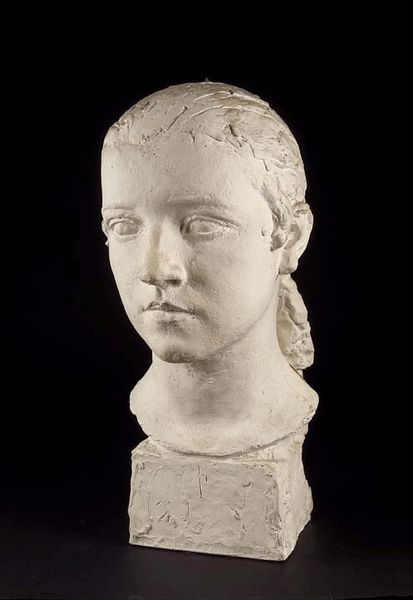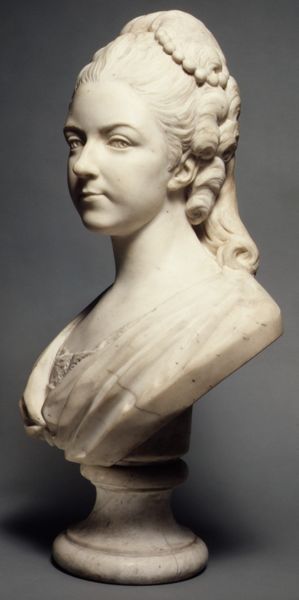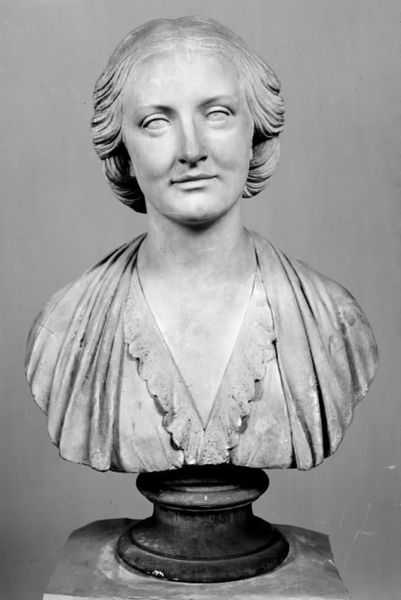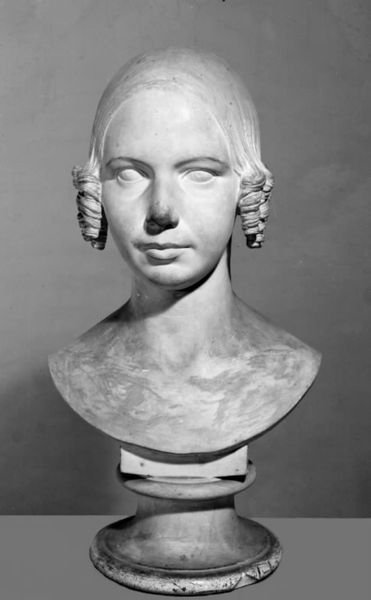
carving, sculpture, marble
#
portrait
#
statue
#
carving
#
portrait image
#
neoclassicism
#
portrait
#
close up portrait
#
classical-realism
#
sculptural image
#
portrait reference
#
portrait head and shoulder
#
sculpture
#
marble
#
statue
Copyright: Public domain
John Gibson created this marble bust of Anna Brownell Jameson sometime in the 19th century. The sculpture's cool, smooth surface invites contemplation, and the stark contrast between light and shadow enhances its three-dimensionality. The bust is structured around a series of carefully balanced forms. Note the contrast between the smooth, flowing drapery and the intricate curls framing Jameson's face, which creates a dynamic interplay of textures. Gibson uses the semiotic language of Neoclassical sculpture to convey ideas about intellect, morality, and beauty. The draped fabric, for example, is a classical motif, suggesting timelessness and virtue. The clean lines and idealized features reflect a commitment to order and reason. The sculpture invites us to think about how public identity is constructed and communicated through art. The sculpture isn't just an aesthetic object, but part of a broader cultural conversation about representation, social status, and the values of the 19th century.
Comments
No comments
Be the first to comment and join the conversation on the ultimate creative platform.
